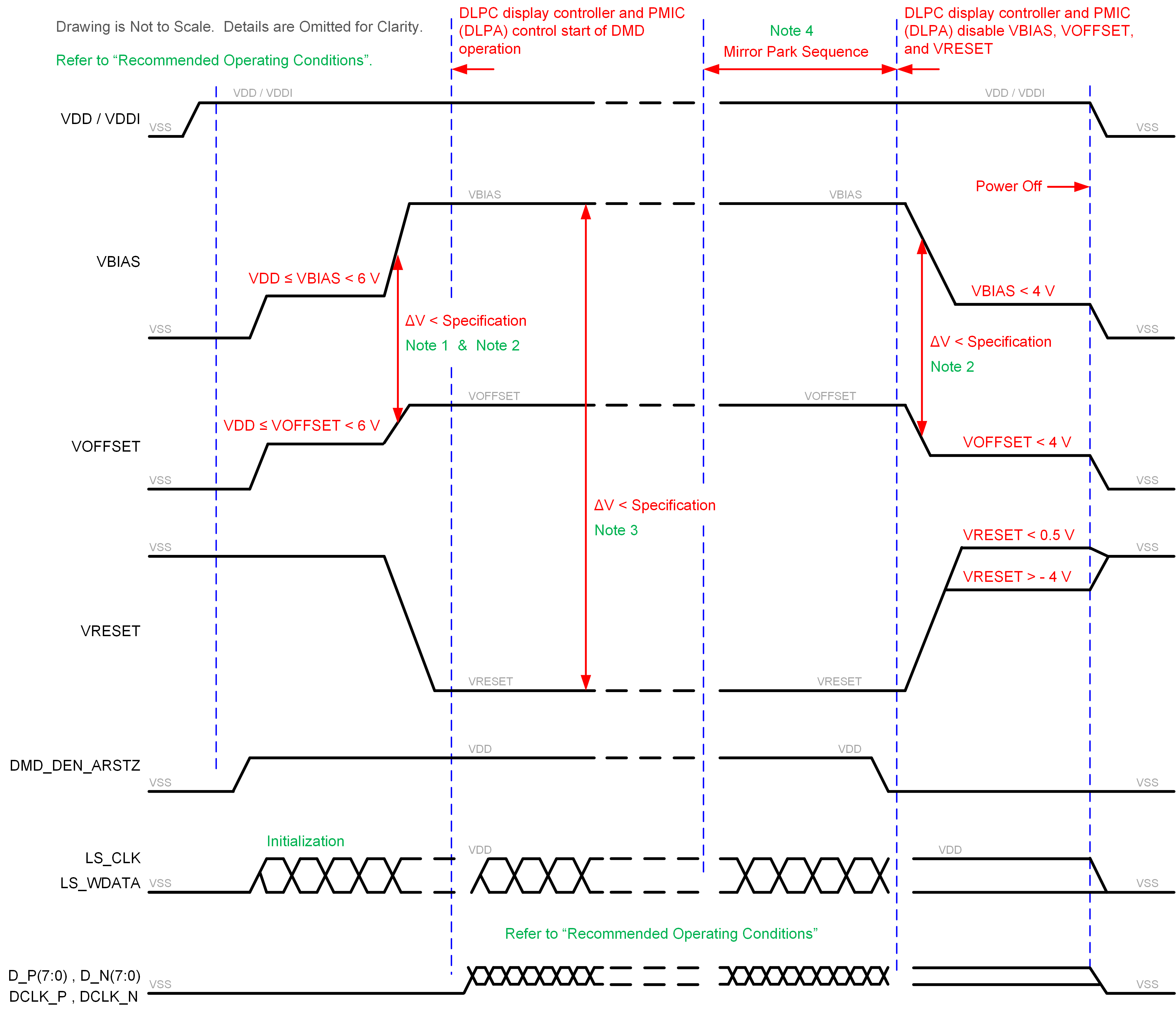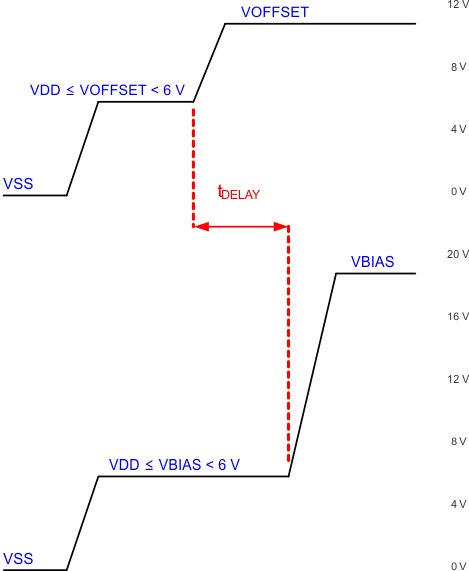ZHCSP44D October 2021 – October 2024 DLP160CP
PRODUCTION DATA
- 1
- 1 特性
- 2 应用
- 3 说明
- 4 Pin Configuration and Functions
-
5 Specifications
- 5.1 Absolute Maximum Ratings
- 5.2 Storage Conditions
- 5.3 ESD Ratings
- 5.4 Recommended Operating Conditions
- 5.5 Thermal Information
- 5.6 Electrical Characteristics
- 5.7 Timing Requirements
- 5.8 Switching Characteristics
- 5.9 System Mounting Interface Loads
- 5.10 Micromirror Array Physical Characteristics
- 5.11 Micromirror Array Optical Characteristics
- 5.12 Window Characteristics
- 5.13 Chipset Component Usage Specification
- 6 Detailed Description
- 7 Application and Implementation
- 8 Power Supply Recommendations
- 9 Layout
- 10Device and Documentation Support
- 11Revision History
- 12Mechanical, Packaging, and Orderable Information
8.3 Power Supply Sequencing Requirements

A. Refer to the Power-Up Sequence Delay
Requirement for critical power-up sequence delay requirements.
B. To prevent excess current, the supply voltage
delta |VBIAS – VOFFSET| must
be less than specified in Section 5.4. OEMs may find that the most reliable way to
ensure this is to power VOFFSET prior
to VBIAS during power-up and to remove
VBIAS prior to VOFFSET
during power-down. Refer to Power-Up Sequence
Delay Requirement for power-up delay
requirements.
C. To prevent excess current, the supply voltage
delta |VBIAS – VRESET| must
be less than the specified limit shown in Section 5.4.
D. When system power is interrupted, the DLPA200x/DLPA3000 initiates hardware power-down that disables VBIAS, VRESET, and VOFFSET after the micromirror park sequence.
E. The drawing is not to scale and details are omitted for clarity.
Figure 8-1 Power Supply Sequencing Requirements (Power Up and Power Down)Table 8-1 Power-Up Sequence Delay Requirement
| PARAMETER | MIN | MAX | UNIT | |
|---|---|---|---|---|
| tDELAY | Delay requirement from VOFFSET power up to VBIAS power up | 2 | ms | |
| VOFFSET | The supply voltage level at the beginning of power-up sequence delay | 6 | V | |
| VBIAS | The supply voltage level at end of power-up sequence delay | 6 | V | |

This requirement applies only to the DLPA200x.
Refer to Power-Up
Sequence Delay Requirement for
VOFFSET and VBIAS supply
voltage levels during power-up sequence
delay.
Figure 8-2 Power-Up Sequence Delay Requirement